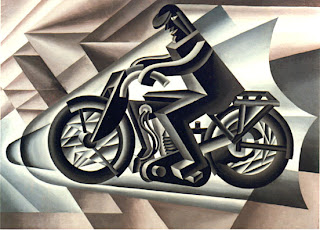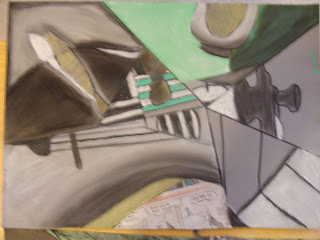Unit 2: TIME Oct.-Nov. MYPD
Unit Question: What Time is it?
AOI: Human Ingenuity: Impact of innovation and creation on society;
Taking Action to think creatively.
You will be assessed through all four criteria:
A.Knowledge and Understanding: (DW blog assignment) Write a 400 word essay on an artwork that interests you in terms of how it expresses Time. (Is its composition moving or still, fast or slow? Is its subject matter fast or slow? When was it made? What idea of time did the artist have when he made it-what notion of time might his culture have had, compared to your culture? How do its materials express time, ie. how much time did it take to make it? How has it changed through time—both physically, and how do we view it now?
B. Application: Develop skills and apply techniques in the making of your own artwork, which has Time as its theme. (Fix a clock movement to this piece of art. The artwork should both tell time and express time.)
C. Reflection and Evaluation:(DW blog entries) Describe your process, evaluate your work; consider feedback. Use design cycle as a way of ordering and developing your ideas, from rough stages to more finished.
D. Personal Engagement: Demonstrate curiosity, self-motivation and willingness to take informed risks. Support and encourage peers.
Objectives: 1. Develop critical thinking.
- Develop composition skills
- Create a multi-media clock that expresses a unique idea of Time
-----------------------------------------------------------------------------------------------------------------------------------------------------------
Myan; They seem to have had a cyclical or circular notion of time, things beginning anew after the end.
My painting, called Artifacts; I'm thinking of fleeting or fugitive light, quick-moving, unsteady.
Gericault: The Raft of the Medusa
Romanticism; human experience and emotion.
You can become shipwrecked, and nature takes over--things get out of control. Think Beethoven.
C. D. Friedrich The Ice Flow
Another view of nature, slowly crushing the ship.
Looks geological, slow--and cold.
(by the way, Norwegian National Romantic painters were very inspired by this painter.)
Rene Magritte, Surrealism.
When talking composition, I mean the forms or shapes and colors. The composition is symmetric, solid, slow moving.
With the odd subject (what is symbolic, or giving the story) makes the painting even more slow--as if time stops.
Georgio DeChirico was known as a painter of the metaphysical school. This movement is an odd one:
it took classical architecture and techniques, which leant order to the world, but depicted the world as a place where order and the knowable are in short supply. It has a dream quality.
As a general rule paintings seem more "timeless" when they lack human figures. Why would this be, do you think?
Marcel Duchamp's Nude Descending a Staircase. There's a lot of movement here--or at least we see the traces of movement. Do we see a figure, or do we see the traces of this figure, as it has moved in space?
This is a fun example of Futurism.
compositionally, with all its lines and direction, it is fast.
symbolically it is fast too.
Interesting to think: the Italians who started this art movement around 100 years ago loved speed and machines.
If you were to try to show that you were in love with the future now, how would you show it?
Jackson Pollock, Abstract Expressionism
We see lots of movement here in the composition.
What is the subject?
Perhaps it is the painter's very body, his arms, which we sense have tossed this paint down on the canvas. He must have been dancing almost.
Gerhard Richter.
He uses a squeegy or board-like thing to drag the paint, rather quickly.
Another Richter, the same painter.
























































